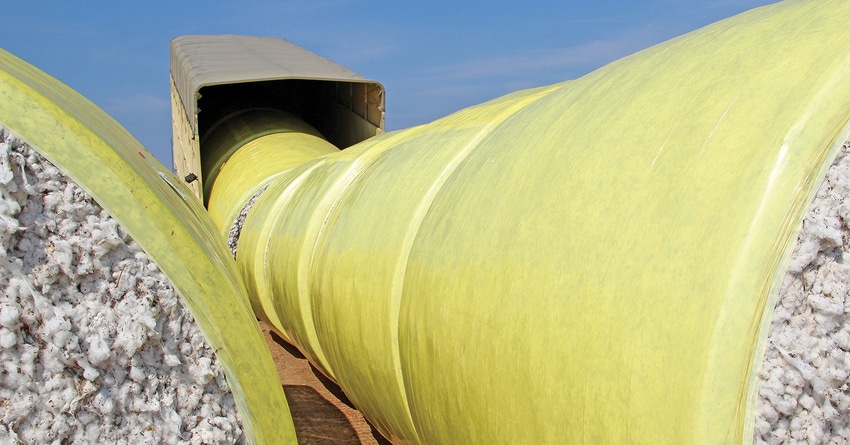
Lauren Krogman is out to eliminate cotton contamination by seeking better ways to keep it out of the supply chain. As manager of marketing and processing technologies for the National Cotton Council, she is working to keep U.S. cotton the preferred source of fiber.
“Cotton grown in the United States has a reputation for being one of the cleanest, least contaminated fibers in the world,” she said.
Krogman and the NCC work to keep it that way.
“While our research community is diligently pursuing a practical means to mechanically identify and remove plastic," she said. "The best defense is to make sure that contaminants do not find their way into the seed cotton.”
One of the ways the council is working to eliminate the contamination risk is by working with organizations like The American Society of Agricultural and Biological Engineers to assess and approve the round module standard.
Lauren Krogman, center, is Manager of Marketing and Processing Technologies for the National Cotton Council. She is shown with Kelley Green and Mark Williams, both of the Texas Cotton Ginners Association. (Brent Murphree)
“This standard includes testing requirements and performance specifications for round module wrap," she said. "The goal of the updated standard is to define minimum performance levels for round module wrap products to 1) protect stored seed cotton from quantity and quality losses and 2) minimize plastic contamination in ginned lint bales.”
That initiative is a result of the U.S. cotton industry taking all necessary measures to prevent plastic contaminants from entering baled cotton – including module wrap, according to Krogman.
“Research has proven that if round modules are delivered to gins in good condition, (no tears, punctures, loose material, or adhesive failures), then the likelihood of plastic entering the gin, and ultimately the ginned bale, is greatly reduced,” she said.
Bale packaging
Along those lines, the Joint Cotton Industry Bale Packaging Committee also works to ensure the bale packaging products are not contaminating cotton. This includes bale strapping, as well as woven polypropylene and polyethylene film bagging.
Best practices have been developed by the NCC to share and educate those involved in the cotton industry.
“The Council helps to develop educational material for members in the industry,” Krogman said. “This is important to prevent and report any contamination that could affect our bales."
For example, Krogman notes, in 2019, a 12-chaptered educational video was developed with help from John Deere on the Prevention of Plastic Contamination. The video addressed possible points of contamination from harvest in the field to unwrapping a round module at the gin.
"This video is highly recommended for any producer or ginner wanting a refresh of best practices or to show their staff as training to reduce contamination," she said. "The video is available on the council website.”
Educational materials
Making educational materials is necessary but getting feedback from the industry may be equally important, according to Krogman.
“The Council also provides an online survey for mills to report any instances they experience with U.S. cotton and contamination,” she said. “This allows council staff to keep a record of these reports and better form educational material to address the industry. Reducing and eliminating contamination will take the full effort of all industry segments. It is essential we continue to defend our reputation for being one of the cleanest, least contaminated fibers in the world.”
Despite the position of U.S. cotton in the global fiber market, contamination remains a big problem for growers. Contamination finds its way into cotton in many forms including plastic twine and shopping bags, irrigation ditch liners, mulch, paper products, and even old clothes.
“When contaminated cotton reaches a textile mill, mills must stop their operations and remove the contaminates immediately," she said. "The downtime needed to remove contaminates can be extremely costly for mills."
Krogman noted that often, mills will demand a discount on the price they paid for the contaminated cotton. Mills can also decide to take their business to another supplier.
"U.S. cotton producers do not need to lose valuable customers over contamination," she said. "Contamination is 100% preventable.”
Prevention of contamination starts in the field, according to Krogman.
“Remember that communication between the producer and gin manager should always be a priority," she said. "If a module has an issue during harvest, inform the gin as soon as possible. This rule also applies to damaged modules. If the gin is made aware of damage on the front end, they can take the proper steps to clean up the module and prevent contamination.”
The cotton industry works to improve its practices and equipment to reduce contamination and maintain a high quality of cotton through awareness programs and communications throughout the community.
About the Author(s)
You May Also Like




